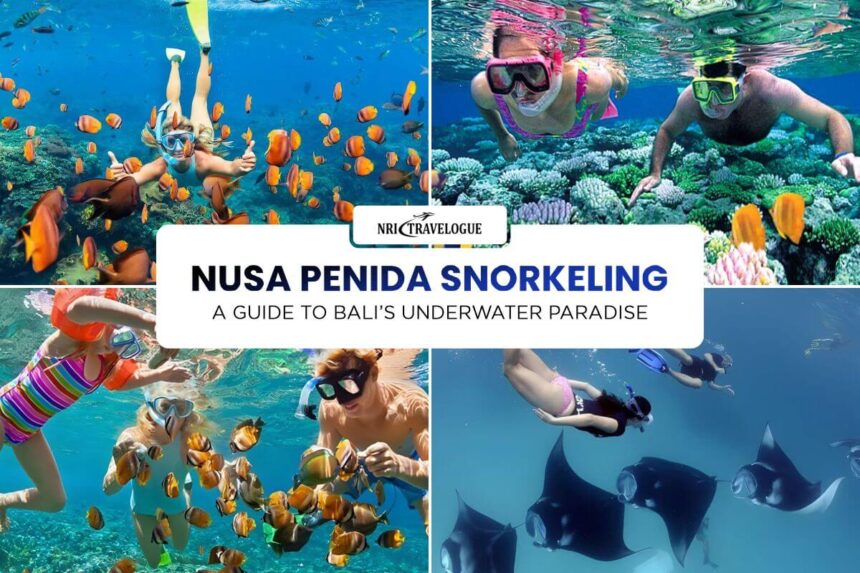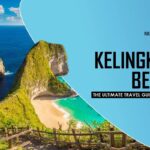If you’re planning a trip to Bali, chances are you’ve heard whispers of Nusa Penida—a rugged island famous for its cliffs, turquoise waters, manta rays, and marine life that belongs on a National Geographic documentary. While many come here for Instagram-worthy shots at Kelingking Beach, seasoned travelers know the real magic lies underwater. Nusa Penida snorkeling offers an experience that combines vibrant coral gardens, schools of tropical fish, and encounters with graceful manta rays—all set against the backdrop of crystal-clear seas.
In this guide, you’ll get everything you need to know before your snorkeling adventure: where to go, what you’ll see, essential tips, and why this experience is a must for anyone visiting Bali.
Why Nusa Penida Snorkeling is Unforgettable
Snorkeling in Nusa Penida stands apart from other parts of Bali because of the island’s location and biodiversity. The water channels between Nusa Penida, Nusa Lembongan, and Nusa Ceningan are nutrient-rich, attracting manta rays, turtles, and schools of reef fish. I remember my first trip vividly—just five minutes after dipping my mask in at Manta Bay, a black manta with an enormous wingspan glided past like something out of a dream. There were no crowds, just the sound of my own breathing through the snorkel and the shadow of a giant moving gracefully beneath me.
Unlike crowded beaches in mainland Bali, snorkeling here feels authentic, wild, and thrilling. It’s not just about pretty corals; it’s about feeling small against the vastness of the ocean and connecting with nature at its most raw.
Best Snorkeling Spots in Nusa Penida
Knowing where to snorkel makes all the difference. Here are the top spots you shouldn’t miss:
1. Manta Bay
This is the crown jewel of Nusa Penida snorkeling. Giant manta rays visit year-round, attracted by plankton-rich waters.

Even if you’re not a confident swimmer, wearing a life jacket while floating on the surface gives you a front-row view of these enormous yet gentle creatures.
2. Crystal Bay
If manta rays are too adventurous for your first swim, Crystal Bay is ideal.

With its calm waters and white sandy bottom, it’s beginner-friendly yet teeming with colorful fish. Visibility here is often excellent—think 20 meters or more—on a clear day.
3. Gamat Bay
More of a hidden gem, Gamat Bay is where you’ll find pristine coral gardens.

The swim here feels like snorkeling over an underwater meadow, with starfish, angelfish, and hard corals stretching into the distance.
4. Toyapakeh
This spot is a hit with freedivers and snorkelers because of its strong currents that attract big schools of fish.

It’s like entering a moving aquarium—thousands of silver fish catching the sunlight as they swim past in coordinated waves.
5. Wall Point (Near Nusa Lembongan)
Though technically closer to Nusa Lembongan, many snorkeling tours from Penida stop here.

You’ll drift along a wall of vibrant coral while spotting parrotfish and sea turtles. It’s relaxing because the current does the work—you just float and enjoy the view.
Marine Life You’ll See While Snorkeling
One of the best parts about Nusa Penida snorkeling is the sheer variety of marine life. If you’re lucky, in just one trip you could spot:
Manta Rays: The stars of the show, often with wingspans up to 5 meters.

Sea Turtles: Frequently found in calmer bays, these creatures are used to snorkelers and won’t shy away.

Colorful Reef Fish: Clownfish, butterflyfish, angelfish, and triggerfish are abundant.

Corals: Expect both hard and soft corals in vibrant shades of purple, orange, and pink.

Occasional Surprises: Some have reported seeing reef sharks or even mola mola (sunfish) in deeper sections during July–October.

On one trip, our group was floating at Crystal Bay when a swirling ball of sardines appeared like a curtain moving across the water. It was surreal—the sound of thousands of fish moving in unison made the water itself feel alive.
When is the Best Time for Nusa Penida Snorkeling?
Timing your snorkeling makes a difference, both for visibility and comfort.
- Dry Season (April to October): Clear waters, calm seas, and excellent visibility. July to September can bring mola mola sightings.
- Wet Season (November to March): Rainfall is heavier, and seas can be rougher, but tours still run. Expect lower visibility, but you’ll also find fewer crowds.
Early morning trips are best. The seas are calmer, visibility is clearer, and marine life is more active. By mid-afternoon, strong currents and bigger crowds can make things less enjoyable.
Tips for a Safe and Memorable Snorkeling Trip
Snorkeling in Nusa Penida is rewarding, but safety and preparation are key. These tips can help:
- Book a Reputable Tour: Many tours depart from Sanur (Bali) or from Nusa Penida itself. Choose operators who provide proper equipment and life jackets.
- Check the Currents: Some areas have strong currents, so staying with your guide or within designated zones is crucial.
- Bring Reef-Safe Sunscreen: Protect your skin and the marine ecosystem at the same time.
- Go Early: Early trips mean calmer waters and fewer boats.
- Practice Responsible Snorkeling: Don’t touch coral or chase fish. Watch quietly, and the marine life will often come closer out of curiosity.
How to Get to Nusa Penida for Snorkeling
Getting here is straightforward but requires planning:
- From Bali Mainland (Sanur): Fast boats take around 40–50 minutes to Nusa Penida.
- From Nusa Lembongan: A short boat ride across the channel connects you directly.
- Day Trips vs. Overnight Stays: If you’re short on time, snorkeling can be done in a day trip. But staying overnight gives you the chance to combine snorkeling with iconic cliffside viewpoints like Angel’s Billabong and Diamond Beach.
On my last visit, staying two nights on the island turned out to be the best decision. After snorkeling in the morning, we explored the cliffs in the afternoon, ending the day with a sunset drink overlooking the ocean. That balance of underwater adventure and rugged landscapes is what makes Nusa Penida irresistible.
What to Pack for Snorkeling in Nusa Penida
Pack light but smart. Essentials include:
- Swimwear and a quick-dry towel
- Reef-safe sunscreen and sunglasses
- GoPro or waterproof phone case for photos
- Flip flops and a dry bag for your belongings
- Reusable water bottle (many tour boats provide refills)
If you have your own mask and snorkel, bring it. Rental equipment is available everywhere, but having your own ensures a perfect fit and more comfort.
Why Nusa Penida Snorkeling Should Be on Your Bali Itinerary
Many people visit Bali and stick to the mainland beaches or Ubud’s rice terraces. But snorkeling in Nusa Penida adds something different—it’s raw, adventurous, and deeply rewarding. The island’s dramatic cliffs create a backdrop that feels otherworldly, yet under the surface is a marine ecosystem full of life. It’s a reminder of why travel isn’t just about places but experiences that leave you humbled.
If you’ve ever wanted to swim alongside manta rays, float above vibrant coral gardens, or simply feel the joy of being surrounded by tropical fish, Nusa Penida snorkeling is the adventure you’re looking for.
Final Thoughts
Nusa Penida snorkeling is one of those experiences that stays with you long after the trip. Whether you’re a seasoned snorkeler or it’s your first time, the island’s bays and reefs offer something magical. Picture yourself gliding over coral gardens at Crystal Bay, spotting a turtle at Toyapakeh, or locking eyes with a manta ray. These are not just moments; they’re memories that define your Bali adventure.
If you’re planning your trip, don’t just admire Nusa Penida from the cliffs. Go beneath the surface, and let the ocean show you its wonders.
Ready to plan your Nusa Penida snorkeling experience? Pack your mask, book a boat, and take the plunge—it’s a journey you won’t regret.
Yes, Nusa Penida is one of the top snorkeling destinations in Bali. The island offers rich coral reefs, clear waters, and encounters with manta rays and turtles.
Manta Bay and Crystal Bay are the most popular snorkeling spots. For vibrant coral gardens, Gamat Bay and Toyapakeh are equally stunning.
Not necessarily. Many spots are beginner-friendly, and tour providers can give you life jackets for extra safety. Guides will also stay nearby to assist.
Manta rays are seen year-round at Manta Bay. However, sightings can depend on water conditions and visibility, with mornings often being the best time.
You can take a 40–50 minute fast boat from Sanur in Bali or a short boat ride from Nusa Lembongan. Many operators offer day trips as well as overnight options.









